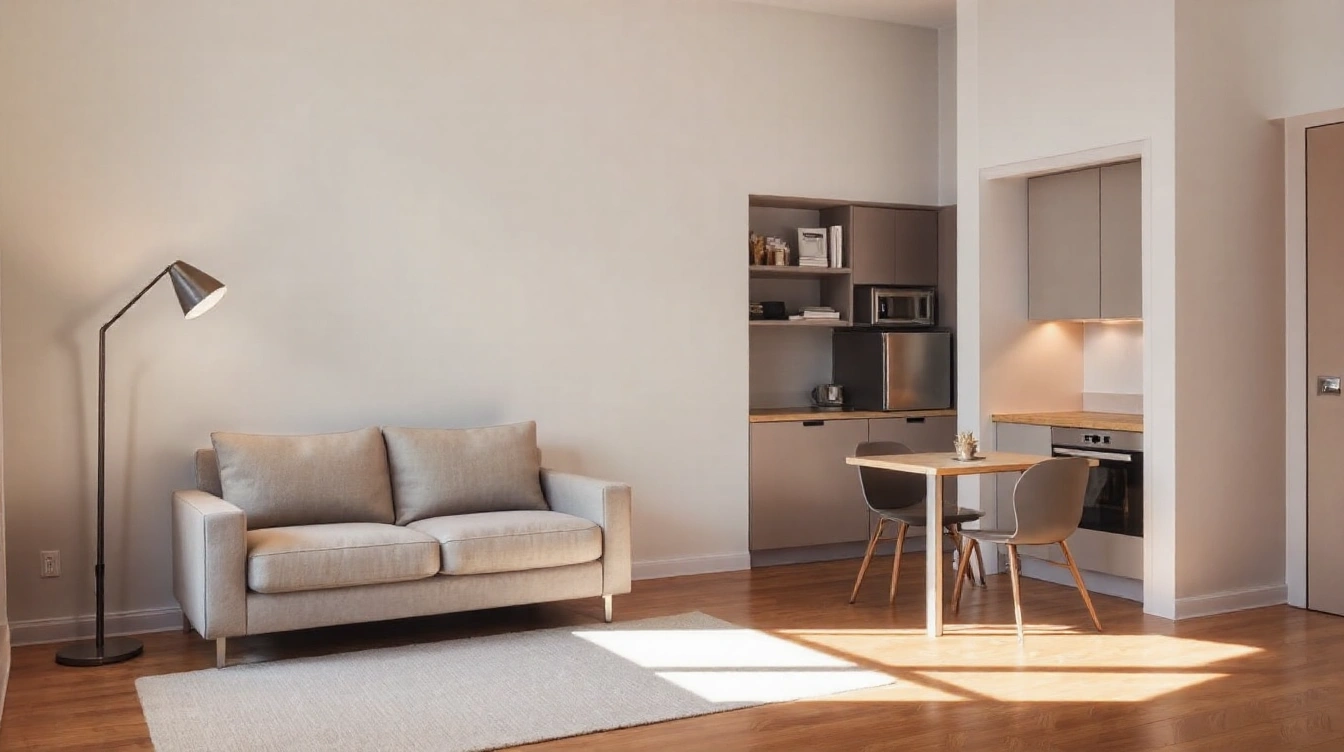Essential strategies for maximizing small UK living spaces
Optimizing small space in UK homes begins with a thorough evaluation of the floor plan and available space. Understanding every nook and corner helps reveal hidden potential. For instance, unused wall space can become a vertical storage area, while corners can host compact furniture pieces, turning them into practical storage or seating spots. Assessing the functional flow ensures that the limited space serves multiple needs without feeling cramped.
Prioritizing multi-functional room use is crucial. In many UK homes, rooms might need to perform several functions simultaneously—such as a living room doubling as a home office. Selecting furniture that adapts, like foldaway desks or sofa beds, creates flexibility. This approach not only conserves space but improves daily usability, changing the way occupants interact with their rooms throughout the day.
Have you seen this : What Are the Most Uncommon Household Chores People Dislike?
Incorporating flexible design elements further enhances space efficiency. Items like modular shelving or sliding doors adjust to different needs over time while maintaining aesthetic appeal. This adaptability supports evolving lifestyles, particularly in small UK homes where space constraints demand constant innovation. These strategies, when combined, offer practical tips and limited space solutions that elevate comfort and functionality without sacrificing style.
Space-saving furniture and transformative pieces
When dealing with compact living areas, space-saving furniture is essential to maximize functionality without crowding your home. Modular furniture, which can be rearranged or expanded, offers unmatched flexibility. For instance, a modular sofa can transform from a lounging area to a guest bed with ease, ideal for small flats.
Also to read : How can you choose the right color scheme for a UK home?
Folding beds are another stellar example in UK flat furniture ideas. These beds can discreetly fold into walls or cabinets, freeing up valuable floor space during the day. Often, they are paired with storage compartments or convertible desks, further enhancing room utility.
Customizable and multi-purpose furniture brings a practical edge. Consider storage ottomans doubling as seating or desks with adjustable heights to suit work or leisure activities. Many UK brands specialize in such designs tailored for limited spaces, blending style with function.
Selecting pieces that offer multiple roles complements the lifestyle in smaller flats, allowing residents to live comfortably without sacrificing design appeal. With clever choices in space-saving furniture, your space can feel larger, organized, and inviting.
Smart storage solutions for clutter-free living
Keeping a UK home organized can be challenging, but smart storage solutions make decluttering achievable. Maximizing vertical space and wall storage stands out as an effective strategy. Installing shelves or hooks on walls frees up floor areas, creating an open, tidy environment. This approach is especially valuable in smaller UK homes where space is limited.
Another underutilized space is under the bed. Using shallow drawers or rolling boxes as hidden storage here helps store seasonal clothing or spare bedding discreetly. Behind-door organizers also offer clever spots for shoes, cleaning supplies, or accessories without encroaching on living space.
Built-in storage solutions are increasingly popular in UK home organization, providing customized compartments that seamlessly blend into the decor. These can be more affordable than one might expect, with many retailers offering budget-friendly options designed for specific niches like kitchens or living rooms.
Combining these strategies provides flexibility and keeps clutter out of sight. Effective decluttering tips focus on using every inch wisely while maintaining aesthetic appeal — crucial for creating calm, functional living spaces. Embracing these storage techniques transforms a chaotic home into an orderly haven.
Effective small space layout and design approaches
Creating functional room layouts in small UK homes is all about smart space planning. One highly efficient method is adopting an open-plan layout, which removes unnecessary walls to enhance flow and make the area feel larger. This approach also allows more natural light to travel freely, boosting the sense of spaciousness—a key factor in tight spaces.
When opening up a room, it’s vital to define distinct functional zones. For example, setting aside areas for living, dining, and working with furniture placement or subtle rugs helps maintain organisation without visual clutter. Using multifunctional furniture, like foldable tables or storage ottomans, keeps zones flexible and adaptable to different activities.
Maximising natural light in your space is another crucial strategy. Positioning mirrors opposite windows or choosing light-coloured walls reflects daylight and opens up the room visually. In the UK, where daylight hours can be limited, optimising window treatments to allow maximum light helps keep interiors bright and inviting.
Through thoughtful arrangement of zones and clever use of light, even the smallest UK homes can feel airy and welcoming without sacrificing functionality. This balance between openness and clearly defined spaces defines effective interior design in compact living environments.
Sustainability and affordability in small space living
Balancing sustainable living with affordability is essential for small space dwellers looking to minimize their environmental impact while managing costs. Choosing eco-friendly products made from renewable or recycled materials not only reduces waste but often enhances indoor air quality. For example, furniture crafted from upcycled wood or repurposed metal offers a unique style without the environmental footprint of new manufacturing.
Cost-effective upgrades can be achieved through simple DIY approaches, such as installing energy-efficient lighting or sealing drafts to lower heating bills. These affordable solutions make a tangible difference without requiring large investments. Additionally, sourcing materials and furnishings from budget-friendly retailers in the UK that specialize in sustainable goods helps maintain cost control.
UK residents can tap into a variety of budget tips that combine thrift with ecological responsibility. Local markets, online swaps, and community tool-lending libraries provide access to resources without the carbon cost of mass production. Embracing such practices ensures small space living is both financially viable and aligned with broader goals for environmental stewardship.
Real-life UK case studies and inspiration
Small flat transformations in London highlight clever use of limited space with multi-functional furniture and effective storage solutions. For instance, many UK small home case studies show how combining living, dining, and sleeping areas within one open-plan design can maximize floor area without feeling cramped.
Family home space optimization stories often involve repurposing underused rooms—like turning a rarely used dining room into a multifunctional study and play area. These inspirational makeovers reveal practical adjustments such as installing built-in shelves or fold-away beds, which enhance usability while maintaining aesthetic appeal.
Visual gallery examples feature before-and-after layouts demonstrating that even tight spaces benefit greatly from thoughtful design. UK case studies emphasize bright, neutral color palettes and ample natural light to create an open atmosphere in small homes. These space-transformation examples prove that with strategic planning, families can enjoy comfortable and stylish living environments regardless of square footage.
By examining real-life UK small home case studies, anyone seeking to optimize their space can draw concrete inspiration from these successful projects. This encourages innovative thinking and practical solutions tailored to small-scale living challenges common across major UK cities.









